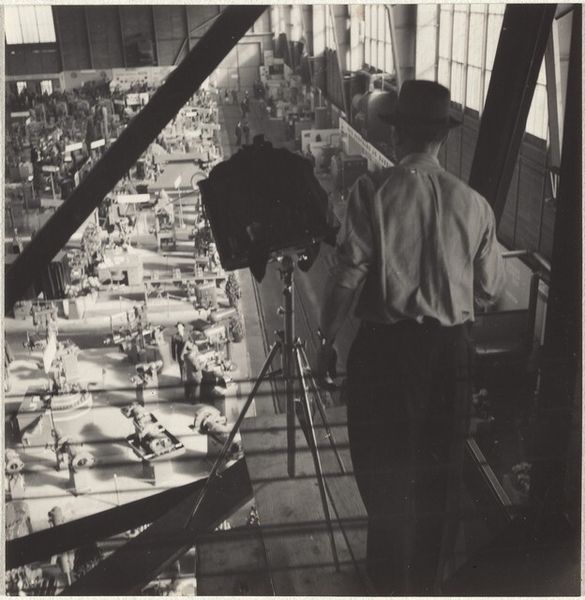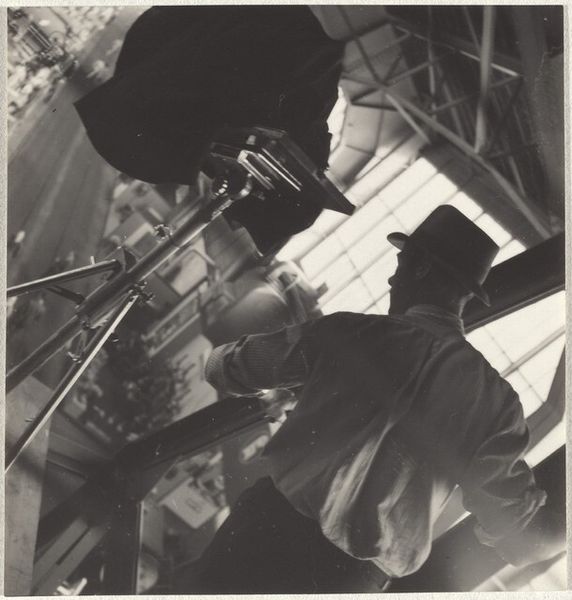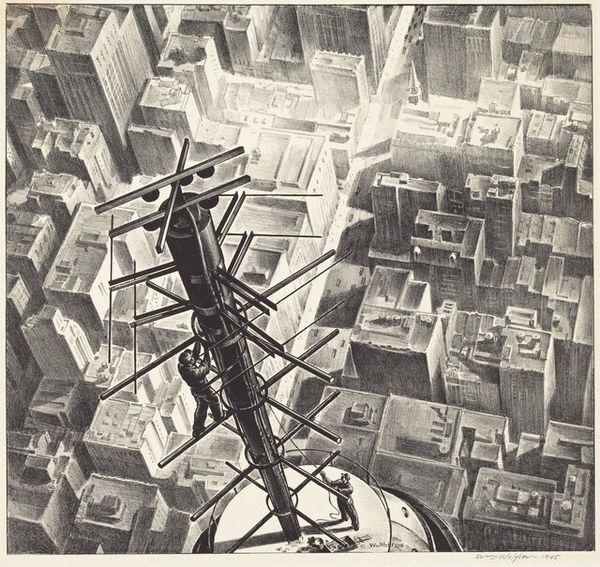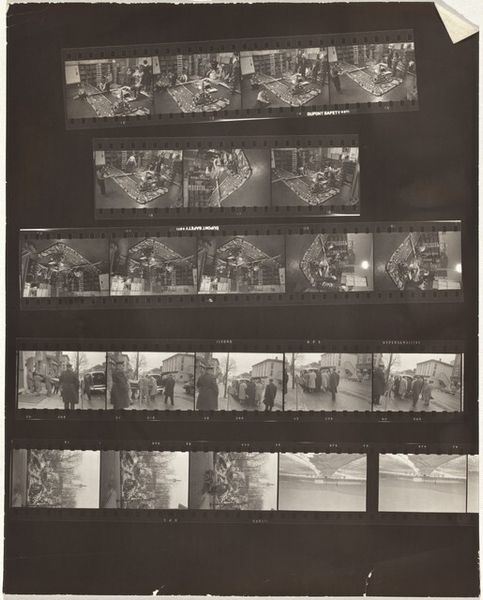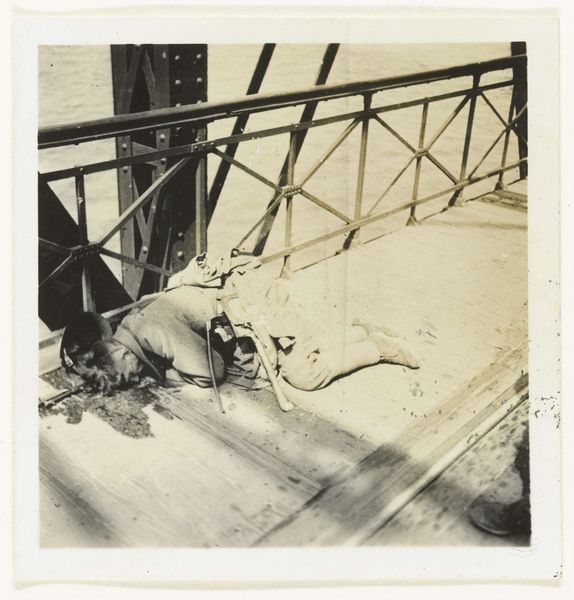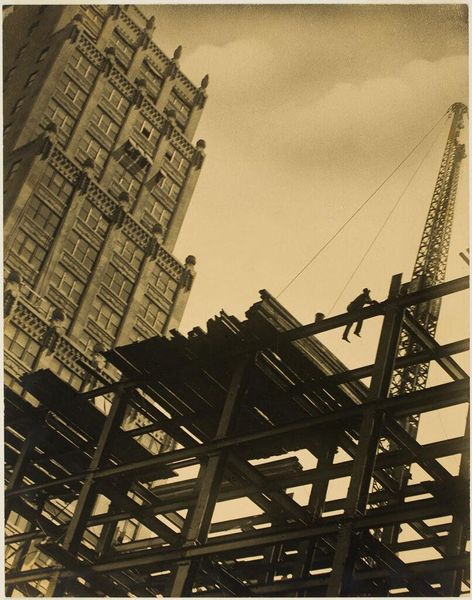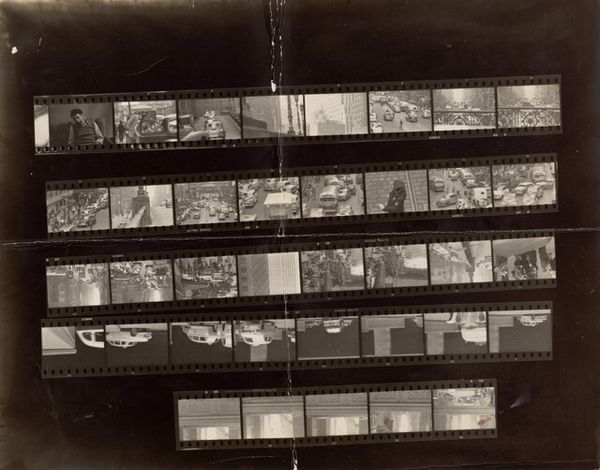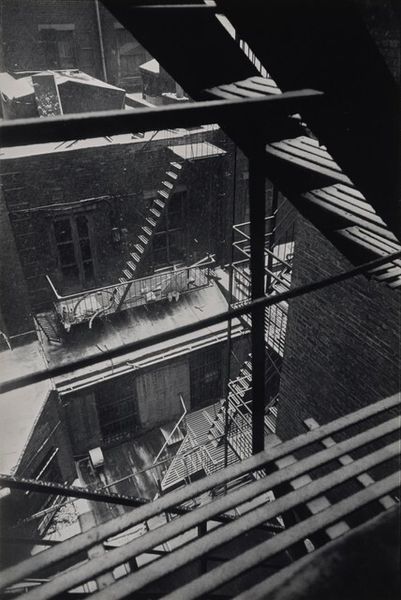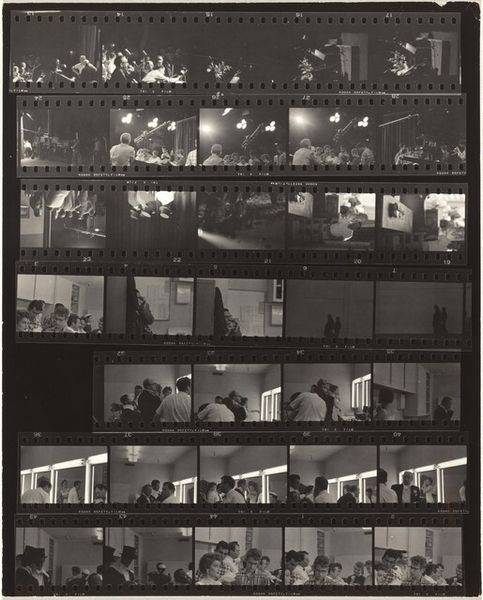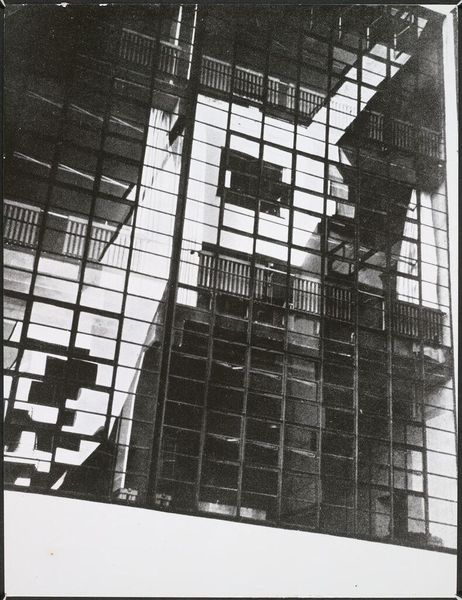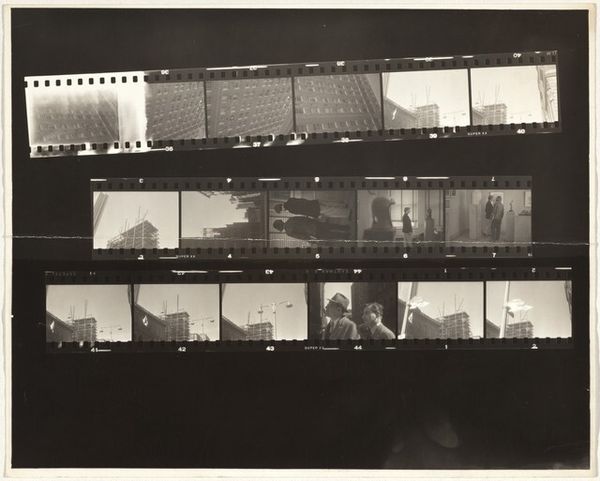
print, photography, gelatin-silver-print
#
portrait
#
film photography
# print
#
archive photography
#
street-photography
#
photography
#
culture event photography
#
gelatin-silver-print
#
ashcan-school
#
modernism
#
realism
Dimensions: sheet (trimmed to image): 5.8 x 5.6 cm (2 5/16 x 2 3/16 in.)
Copyright: National Gallery of Art: CC0 1.0
Curator: Here we have Robert Frank's "On a job with Eidenbenz, Basel," a gelatin silver print dating back to 1945. What are your initial thoughts? Editor: My first impression is its unusual perspective—almost as if we are peering down from the rafters. The composition, with its strong diagonal beams cutting across the scene, creates a sense of dynamic instability. Curator: The perspective certainly shifts our gaze, offering a somewhat detached observation point. This photo provides a layered understanding of labour and representation, don't you think? Editor: In what sense? Curator: Think about the context. Post-war Basel and labor practices. There's an implied narrative about the individual worker both contributing to and being a subject of observation. It encourages viewers to confront issues of class and social standing. The gaze of the photographer positions us in a way that we too participate in observing this scene. Editor: I see what you're saying. The social element is there, though the formal elements cannot be disregarded. I’m drawn to how Frank used the available light, creating strong contrasts that draw attention to different zones of the image. The sharp lines and subtle gradations contribute to the photo’s structural strength. Curator: True, it does have compelling structural qualities, but it goes beyond just surface aesthetics. The photo resonates with themes of post-war labor and reconstruction. What could be Eidenbenz? It prompts considerations around historical documentation. Frank's style adds another layer, documenting a certain time with an element of street realism to it. Editor: Perhaps so. However, that singular focus on political context minimizes the sheer skill it must have taken to make. A certain elegance can still be derived just from contemplating it, the stark monochromatic scale, and the very textures in view. The beams cut almost perfectly, but just as a small aside; a human is supporting one! That tension speaks, again, purely through form. Curator: I'm certainly not overlooking form, however I wonder about this interplay: How does the artistic framing either enable or complicate dialogues related to socioeconomic inequities of mid-20th-century society? Editor: I'm not going to deny the presence of outside influence. But from a purely aesthetic and philosophical level, the geometric elements give form to thought. Curator: I see our different vantage points are well-cemented, haha. For me, this piece pushes a conversation regarding photography's capability in exposing facets of identity at pivotal times. Editor: And for me, a stimulating reminder of just how impactful formal construction can be on art that is ostensibly documentary.
Comments
No comments
Be the first to comment and join the conversation on the ultimate creative platform.
